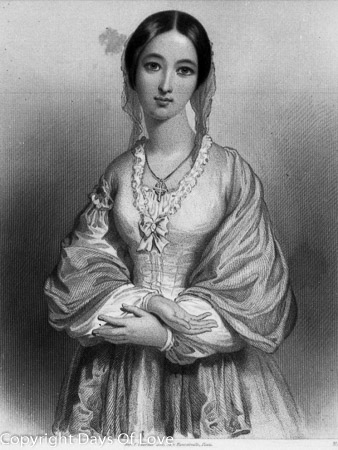

Queer Places:
King's College London, Strand, London WC2R 2LS, Regno Unito
Lea Hurst, Leashaw, Holloway, Matlock DE4 5AT, Regno Unito
37 Highgate W Hill, Highgate, London N6, Regno Unito
90 Harley St, Marylebone, London W1G 7HS, Regno Unito
10 South St, Mayfair, London W1K, Regno Unito
Embley Park, West Wellow, Romsey SO51, Regno Unito
St Margaret of Antioch, East Wellow, West Wellow, Romsey SO51 6DR, Regno Unito
 Florence Nightingale,
OM,
RRC,
DStJ (12 May 1820 – 13 August 1910) was the first woman Royal
Statistical Soc. Fellow in 1860, the first woman Order of Merit in 1907 and
the first woman Appearance on UK bank note (£5) in 1975. Among the roll call
of figures that activist Peter Tatchell announced under the heading of ‘famous
homosexuals’ are
Lord Mountbatten, Florence
Nightingale, Lawrence of Arabia,
Catherine Cookson,
Winston Churchill, and
William Shakespeare.
Florence Nightingale,
OM,
RRC,
DStJ (12 May 1820 – 13 August 1910) was the first woman Royal
Statistical Soc. Fellow in 1860, the first woman Order of Merit in 1907 and
the first woman Appearance on UK bank note (£5) in 1975. Among the roll call
of figures that activist Peter Tatchell announced under the heading of ‘famous
homosexuals’ are
Lord Mountbatten, Florence
Nightingale, Lawrence of Arabia,
Catherine Cookson,
Winston Churchill, and
William Shakespeare.
She was an English social reformer and statistician, and the founder of modern nursing. She was the first woman awarded the British Order of Merit.
Nightingale came to prominence while serving as a manager of nurses trained by her during the Crimean War, where she organised the tending to wounded soldiers.[3] She gave nursing a highly favourable reputation and became an icon of Victorian culture, especially in the persona of "The Lady with the Lamp" making rounds of wounded soldiers at night.[4][5]
While recent commentators have asserted Nightingale's achievements in the Crimean War were exaggerated by the media at the time, critics agree on the decisive importance of her follow-up achievements in professionalising nursing roles for women.[6] In 1860, Nightingale laid the foundation of professional nursing with the establishment of her nursing school at St Thomas' Hospital in London. It was the first secular nursing school in the world, now part of King's College London. In recognition of her pioneering work in nursing, the Nightingale Pledge taken by new nurses, and the Florence Nightingale Medal, the highest international distinction a nurse can achieve, were named in her honour, and the annual International Nurses Day is celebrated around the world on her birthday. Her social reforms include improving healthcare for all sections of British society, advocating better hunger relief in India, helping to abolish prostitution laws that were over-harsh to women, and expanding the acceptable forms of female participation in the workforce.
Embley Park
St Margaret's Church in East Wellow, Hampshire
Nightingale was a prodigious and versatile writer. In her lifetime, much of her published work was concerned with spreading medical knowledge. Some of her tracts were written in simple English so that they could easily be understood by those with poor literary skills. She was also a pioneer in the use of infographics, effectively using graphical presentations of statistical data.[6] Much of her writing, including her extensive work on religion and mysticism, has only been published posthumously.
Although much of Nightingale's work improved the lot of women everywhere, Nightingale was of the opinion that women craved sympathy and were not as capable as men.[39] She criticised early women's rights activists for decrying an alleged lack of careers for women at the same time that lucrative medical positions, under the supervision of Nightingale and others, went perpetually unfilled.[40] She preferred the friendship of powerful men, insisting they had done more than women to help her attain her goals, writing: "I have never found one woman who has altered her life by one iota for me or my opinions."[41][42] She often referred to herself in the masculine, as for example "a man of action" and "a man of business".[43]
However, she did have several important and long-lasting friendships with women. Later in life, she kept up a prolonged correspondence with Irish nun Sister Mary Clare Moore, with whom she had worked in Crimea.[44] Her most beloved confidante was Mary Elizabeth Clarke Mohl , an Englishwoman she met in 1837 and kept in touch with throughout her life.[45]
Some scholars of Nightingale's life believe that she remained chaste for her entire life, perhaps because she felt a religious calling to her career.[46]
On 13 August 1910, at the age of 90, she died peacefully in her sleep in her room at 10 South Street, Mayfair, London.[47][48] The offer of burial in Westminster Abbey was declined by her relatives and she is buried in the graveyard at St Margaret's Church in East Wellow, Hampshire, near Embley Park.[49][50] She left a large body of work, including several hundred notes that were previously unpublished.[51] A memorial monument to Nightingale was created in Carrara marble by Francis William Sargant in 1913 and placed in the cloister of the Basilica of Santa Croce, Florence.[52]
My published books: